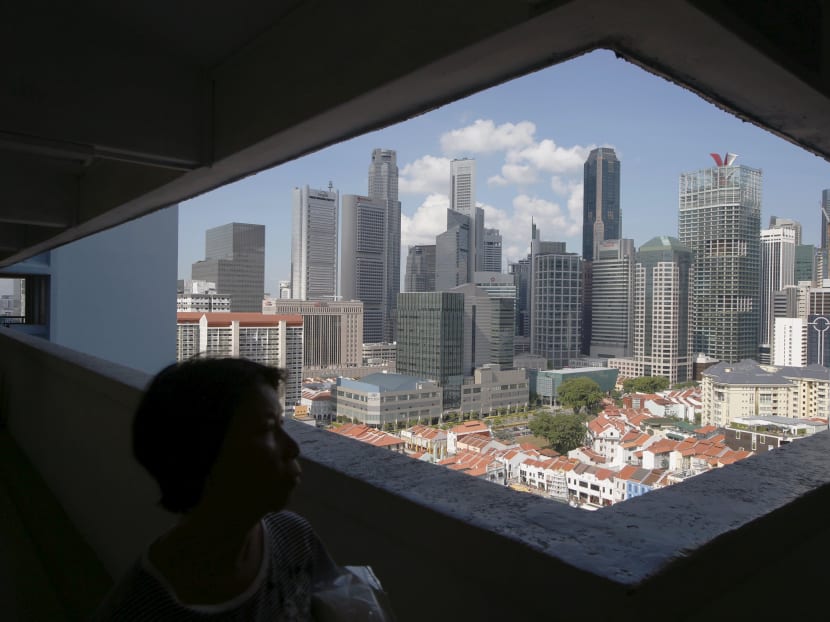Surprise monetary easing a pre-emptive move amid weak growth: Economists
SINGAPORE — The central bank’s largely unexpected move to ease its monetary stance to neutral appears to be a pre-emptive measure against external downside risks to economic growth, economists said.
SINGAPORE — The central bank’s largely unexpected move to ease its monetary stance to neutral appears to be a pre-emptive measure against external downside risks to economic growth, economists said.
The Monetary Authority of Singapore (MAS) – which manages monetary policy by allowing the domestic currency to fluctuate against those of its major trading partners – on Thursday moved to a neutral policy of zero per cent appreciation from the earlier “modest and gradual appreciation path”. The move sent the Singapore dollar to 1.3646 to the US dollar at about 1.05pm, a near three-week low.
A neutral stance is typically deployed during critical situations such as the 2008 global financial crisis and the 2001 tech bubble recession, where GDP growth contracted and core inflation fell into the negative zone. The move today is a significant one and shows that the central bank is probably uncomfortable with the recent strength in the SGD, UOB said in a note.
The move was also a surprise as MAS did not make adjustments to other parameters such as growth forecast or inflation, CIMB economist Song Seng Wun said adding that it was likely a pre-emptive measure on fears that growth may come in weaker than expected for Singapore’s trade dependent economy due to external risks.
Earlier this week, the International Monetary Fund (IMF) cut its global growth forecast for the fourth time in a year due to a worsening spillover from China’s economic slowdown, the impact of low oil prices on emerging markets, as well as persistent economic weakness in Japan, Europe and the United States.
The IMF forecast global economic growth of 3.2 per cent this year, compared to a forecast of 3.4 per cent in January. The growth estimate was also lowered in July and October of last year.
It is predicting 1.8 per cent expansion for Singapore this year compared the city state’s government forecast of 1-3 per cent.
While moving to neutral stance, MAS made it clear that this was not a policy to depreciate the Singapore dollar. The exchange rate policy is used to manage inflation and a key factor was expectations that 2016 core inflation will likely come in at the lower half of their 0.5% to 1.5% forecast.
Effectively, the Singapore currency’s nominal effective exchange rate (S$NEER) has shifted back into the lower half of its new neutral band and in US$/S$ terms, this points to a 1.35-1.38 range as of this morning, DBS Investment Research said. The outlook for the USD/SGD will, in the end, still be dictated by the USD’s direction against its trade-weighted basket of currencies, it added.
UOB, meanwhile, is maintaining that the USD/SGD will remain around the 1.34/US$ level by end of second quarter of 2016, before trending higher to the 1.36/USD level by end of 2016. “It is still early to adjust our FX forecast, especially given how unpredictable policy outcomes and financial markets responses have been,” it explained.







